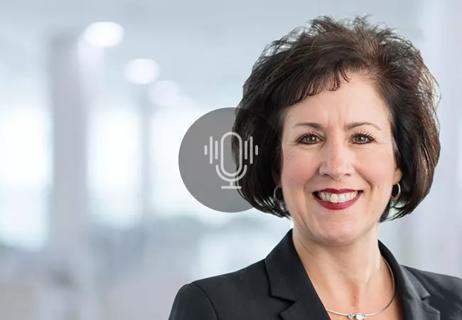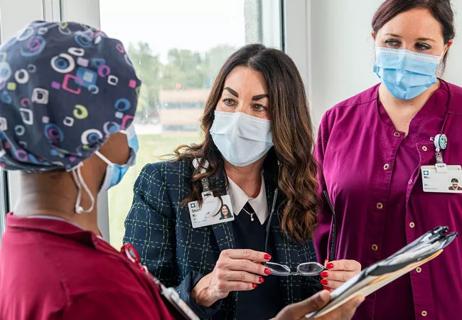APRNs pivotal to healthcare transformation

By Meredith Lahl, MSN, APRN, PCNS-BC, PPCNP-BC, CPON
Cleveland Clinic is a non-profit academic medical center. Advertising on our site helps support our mission. We do not endorse non-Cleveland Clinic products or services. Policy
Across the country, communities, patients and health systems like Cleveland Clinic continue to benefit from the imperative and growing role of the advanced practice registered nurse (APRN) in today’s healthcare landscape.
Currently, per the National Council of State Boards of Nursing, there are more than 267,000 APRNs (nurse practitioners, clinical nurse specialists, nurse anesthetists and nurse midwives) in the U.S. And, these advanced practice registered nurses are at the forefront of preventive and primary care. According to the American Nurses Association, numerous industry studies have shown that patients experience equivalent outcomes when they receive primary care from APRNs, compared to physicians. Additionally, patient satisfaction scores tend to be equal or higher with APRNs and the cost of APRN care is often lower.
The movement to better establish APRNs as trusted primary care providers notably began when the Institute of Medicine (IOM) released its 2010 report on the future of nursing. The report highlighted the importance of advanced practice nurses in meeting the future demands of healthcare – specifically, the millions of new patients that would be garnering access to care under the Affordable Care Act.
The report also stated that, to meet future demands, APRNs needed to practice to the fullest extent of their education and training. It recommended that states reform scope of practice regulations and remove barriers to APRN practice, such as lack of prescription authority or requirements for onsite physician supervision, both of which impede independent practice by nurse practitioners.
Like the IOM report, similar key points regarding APRN practice needs and barriers have also been heavily touted by the National Governor’s Association; specifically, the association’s 2012 report, “The Role of Nurse Practitioners in Meeting Increasing Demand for Primary Care.”
To date, the lack of regulation uniformity is still a challenge; however, across the board, significant progress is being made. In Ohio, for example, in 2011, APRNs were granted the authority to prescribe Schedule II medications. In 2014, they were able to admit patients to hospitals. And, in 2016, the state of Ohio passed House Bill 216, also known as the APRN Modernization Bill, which officially expanded APRN authority. By expanding authority to provide more accessible, affordable and timely care, House Bill 216 also helps address the impending physician shortage, which is projected to reach 90,000 nationwide in the next 10 years.
Members of Cleveland Clinic’s Nursing Institute Legislative and Health Policy Council were actively involved in the promotion of House Bill 216. More and more, nurses and nurse leaders across the country today are choosing to become actively involved in state healthcare legislation to give the nursing profession a more prominent seat at the policy table – and it’s certainly making a difference. According to the latest available numbers by the American Association of Nurse Practitioners, 21 states and the District of Columbia have approved “full practice” status for nurse practitioners.
As state legislation continues to evolve, it is expected that the number of APRNs will continue to climb, as it has in recent years. Since 2014, at Cleveland Clinic, for example, there have been approximately 450 new APRN positions – taking the total number of APRNs across the system to more than 1,000 for the first time ever.
With cost and access as the primary drivers of current and projected APRN growth, Cleveland Clinic has identified specific future growth areas as:
As with any growth in healthcare, it is important that nursing organizations provide adequate education, training and support for current and incoming APRNs. The following includes a selection of Cleveland Clinic best practices.
As healthcare transformation moves forward and organizations like the Bureau of Labor Statistics continue to make projections like 31 percent APRN job growth rate between 2012 and 2022 – APRNs are sure to have an increased presence in the immediate and long-term future of healthcare.
Meredith Lahl is the Executive Director/Associate Chief Nursing Officer of Advanced Practice Nursing for the Cleveland Clinic Health System.
Photo ©Anne O’Neill

By listening closely and responding authentically, leaders can create an environment where nurses feel valued

Communication and self-reflection key to world-class patient care

Nurse leaders play a pivotal role in employee engagement, quality, safety – and, yes, patient care

Text highlights historic contributions to research, education and clinical care

Insights and advice from a nursing leader

Find balance, slow down, seek feedback and more

A new age in practice, physician partnerships and more

Insight on heart failure awareness and the work of HFSA